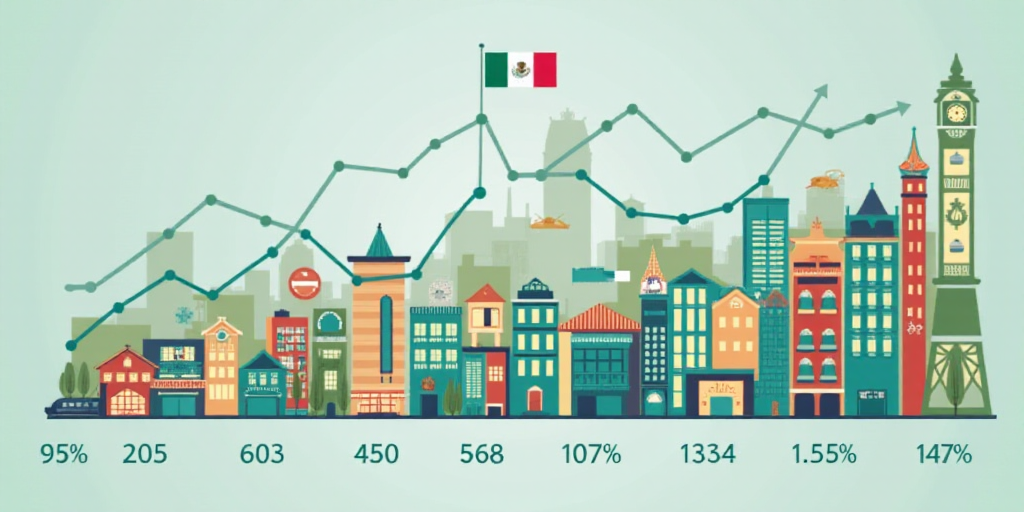Introduction
Twenty-one forecasts for Mexico’s GDP growth in 2025 reveal a spectrum of predictions, from pessimistic to moderately optimistic. These forecasts come from various institutions, including the OECD, FMI, Itaú BBA, UBS, Banamex, Moody’s, Citi, Banxico, Mifel, Scotiabank, Barclays, IMEF, Vanguard, BBVA, Baker Institute, the Fed of Dallas, CEPAL, Deloitte, the World Bank, Hacienda, and Signum Research. The range of predictions is from -1.3% (OECD) to a hopeful 2% (Signum Research), with minimal consensus among the forecasts.
Reasons for Skepticism
Mexico’s capital, Claudia Sheinbaum, has raised valid reasons to be skeptical of the FMI’s forecasts. The wide disparity in predictions undermines the practical utility of these projections.
Key Risks Identified
- Trade Tariffs: The 25% tariffs imposed by Trump on non-T-MEC Mexican products pose a significant risk, despite a temporary extension until July 1 for goods covered under the T-MEC. Both the FMI and OECD cite this as a major factor in their pessimistic outlook, with Banxico and Citi acknowledging it, albeit with nuances.
- Judicial Reform Uncertainty: The reformed judicial system has created legal uncertainty, affecting investment and nearshoring according to BBVA, the World Bank, and Baker Institute. The 58% of analysts surveyed by Banxico also consider this the primary internal risk.
- Weakened Consumer Spending: Scotiabank attributes this to lower remittances and job creation, while Citi, CEPAL, and Vanguard agree that consumer confidence and household spending have decreased.
- Additional Factors: Other contributing factors include fiscal constraints, insufficient energy infrastructure, security concerns in crucial trade regions, and business distrust towards hastily implemented regulatory changes.
Accuracy of Forecasts
Historical accuracy is crucial when evaluating these forecasts. Between 2015 and 2024, the average absolute error (EMA) for the FMI was 1.62%, and for Hacienda, it was 1.70%. In 2020, Hacienda projected a 2% growth rate, but the economy contracted by 8.5%, according to Inegi. Similarly, in 2024, Hacienda’s projection of 3% growth fell short, with the actual growth being only 1.5%.
More reliable forecasters have been the World Bank (EMA of 0.5%), Banxico (0.3%), and BBVA (0.2%). Currently, all three predict a growth rate between 0.5% and 1.5%, which may better reflect Mexico’s actual economic growth.
Conclusion
In summary, Mexico’s GDP growth in 2025 is expected to be minimal. Two critical factors will determine the outcome: whether Trump applies tariffs to all Mexican goods on July 1 and if President Sheinbaum can control internal uncertainty without resorting to manipulating economic realities. Economic models do not predict the future; they infer it based on available data.
Key Questions and Answers
- What are the forecasted GDP growth rates for Mexico in 2025? The range of predictions spans from -1.3% (OECD) to a hopeful 2% (Signum Research).
- Why are there concerns about the accuracy of these forecasts? Historical data shows significant discrepancies between projected and actual growth rates for institutions like the FMI and Hacienda.
- What key risks are identified in these forecasts? Major concerns include trade tariffs, judicial reform uncertainty, weakened consumer spending, and additional factors like fiscal constraints and security issues.






